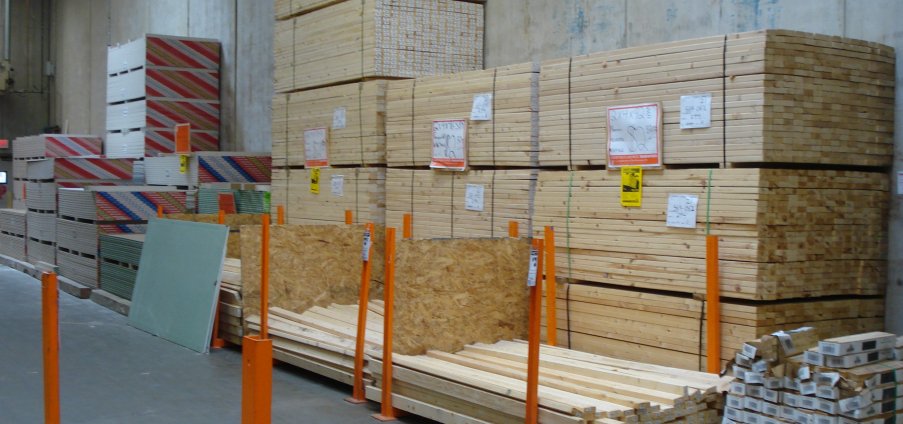This is the draft of an article I wrote for the next issue of “Virginia Forests.” It is substantially based on a post I did a couple months ago, so regular readers might get a feeling of déjà vu. IMO, this one is somewhat improved and the editors will improve it even more.

Wood in the Ecological Value Chain
A chain is only as good as its weakest link, as the old saying goes, and you have to look at the whole chain from start to finish. This is true in any business and it is even more crucial when talking about something’s impact on the environmental affairs. Some products may look very green when you look at the finished product, but are not so environmentally friendly when you consider where they are coming from or where they are going, in other words when you look at the whole environmental value chain.
Tree farmers can take satisfaction from knowing that wood is the most environmentally friendly building or structural product available when you look at the ecological value chain from start to finish.
Start at the beginning. Growing trees is an environmental friendly thing to do. A growing forest removes pollution from the air, sequesters CO2, keeps water clean, provides wildlife habitat and makes the world more beautiful. Think of the forest as the factory where wood is made. Is there any more beautiful factory than the one on our timber lands? The raw materials to make plastic, concrete or metal must be pulled from the earth and processed in noisy, dirty and energy intensive factories. Wood is good.

It is true that harvesting of trees requires the use of fuels, which will emit CO2 and may result in particulate pollution released into the air, and even the most well-managed forest harvests will impact local water quality to some extent. These are serious issues, but they can be minimized and serious Virginia loggers are very careful to tread lightly in the woods. Beyond that, these activities occur only once in many decades on any particular piece of ground and are much more than compensated by the many years of beneficial growth in between harvests. If you look over a thirty-five or forty year pine rotation, it is clear that the net environmental benefits of producing wood are overwhelming.
If you compare forestry to almost any other land use, forestry wins out as the most sustainable and environmentally friendly activity. No other ecosystem better protects and enhances soil and water. Water that flows through a forest usually comes out cleaner than it went in. Compared to the land use for other products, the difference is so extreme that we might actually miss it. Twenty years after operations are completed, a mine, quarry or oil well is still only a hole in the ground unless costly reconstruction has been done.
Twenty years after a harvest a forest is … again a forest with young trees growing robustly.
This renewal is what always impresses me when I interview the Virginia Tree Farmers of the Year. These guys have usually been in the business for many years and they have pictures from many years past. I am astonished to see the old pictures and hearing about the changes. I recall standing in a mature pine forest in Greenville County and talking to Mike Jones (2007 Tree Farmer of the Year) about his land. He showed me an old photo of his grandfather standing in the “same” grove of trees where we stood as we talked. But these were not the same trees. This land had been harvested TWICE since the old man stood proudly among his pines. His grandson could stand among his pines and future generations would still have the chance to stand among their pines. That is what renewable means. Wood is completely renewable and renewable is even better than recyclable.

Let’s complete the ecological value chain. We have seen that wood is ecologically good in its production, sustainable in its harvest and completely renewable, but what happens after you are done with a piece of wood? We like to think our houses will last forever, but they won’t. Wood may be with us for centuries but when its usefulness to us is done it is easily disposed of or cycled back into the natural world. It can be burned as fuel. It releases CO2 at that time, but this is the same CO2 recently absorbed. That is why burning wood is recognized as carbon neutral. If thrown away, wood decays. It doesn’t take long before yesterday’s wood is fertilizer for tomorrow’s growing trees. This again is in striking contrast to other materials. Steel can be recycled at a high energy cost. If thrown away, it will rust away after many years. Concrete also can be recycled with much effort. If you dump it, it will lay until the next ice age. Plastic is the most persistent product. Some plastics will remain in the environment almost forever. Recycling is a good when possible, but it really only postpones the problem. The plastic water bottle may be turned into a carpet or a computer keyboard, but eventually it will end up in a landfill where it will stay … forever.
We need to use all sorts of materials: metal, plastic, glass, stone, concrete, various composites and wood. They are all appropriate for some uses. When you look at the total ecological value chain, wood deserves to come out on top in many cases. Our Virginia tree farms can grow wood, sustainable, now and forever. That beats the alternatives most of the time.
The top picture is a spruce plantation in the kettle-moraines in Wisconsin. The bottom picture shows turning leaves along US 50 in West Virginia.
